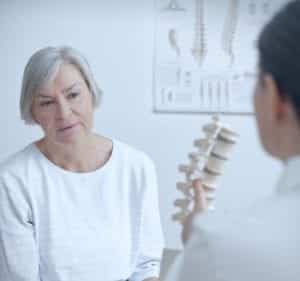
How Do I Know If My Back Pain Is from a Sports Injury?
Whether at the professional, collegiate, or recreational level, all athletes are at a higher risk of suffering a severe sports injury. Participating in sports is great for many things—your heart, your mind, and your strength. In an ideal world, all you would have to focus on is becoming the best and attaining big milestones in your sport. Sadly, a sports injury can derail your goals. Every day, sports pose a risk of injury to athletes. From high-contact sports to trips and falls, sports injuries may not only stop you from enjoying the game, but the effects could follow you for years to come. Let’s look at three common sport-related back injuries, the warning signs of sports injuries, and a list of injury prevention tips to help you determine if your back pain may be sports-related. Top 3 Most Common Sports-Related Back Injuries The risk of sustaining a sports injury is heightened when athletes overuse parts of their body or fail to train adequately. Some injuries are aggravated or developed in freak accidents, such as a football player taking a hard hit to the head after being tackled. Although certain injuries are more common depending on the type of sport you play, generally, athletes can expect to see these types of injuries: Neck injuries: Injuries to the neck can be catastrophic or fatal. Many high-contact sports athletes suffer a “burner” or “stinger,” which results from an impact to the neck that causes the nerves to overstretch or compress. Lower back injuries: Injuries to the lower back can be caused by several movements and impact situations. Typically, athletes experience lower back pain when training incorrectly, causing them to develop acute injuries like sprains and strains. Spinal fractures: Injuries like spinal fractures are common in sports with repetitive movements. Spinal stress fractures, also known as pars fractures or spondylosis, can produce immense lower back pain and are caused by overuse. Common Warning Signs of a Sports-Related Back Injury Suppose you injured yourself in a game or while practicing before a big competition. In such a case, you may be hesitant to seek care because you’re worried about not being able to play in an upcoming game or that your injury is “no big deal.” While some injuries like bumps, cuts, and bruises aren’t as serious, you must pay attention to the following warning signs of a serious, sports-related back injury: Progressively worsening back pain Radiating and weakening pain down the legs Bladder or bowel complications Pain that impacts your ability to walk or balance Persistent pain The worst thing you could do is nothing. Don’t delay seeking medical care immediately after an injury. Even if the injury wasn’t through contact, you might have tweaked a muscle or structure in your body while performing a particular movement related to your sport. Sports Back Injury Prevention Tips When you play sports, it can be difficult to think about anything other than winning and training. However, to reduce the risk of sustaining an injury, it’s critical



